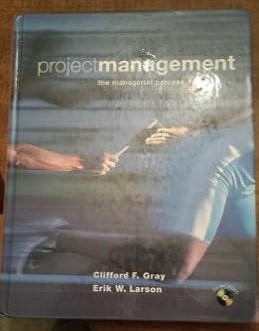Question
PART 1: Evaluate and Make the Decision by comparing the alternatives based on the objectives. This process is achieved in Step Four by creating two
PART 1: Evaluate and Make the Decision by comparing the alternatives based on the objectives. This process is achieved in Step Four by creating two decision matrices - unweighted and weighted.
STEP 1: Create the Unweighted Matrix
- Use a scale of 0 - 3 to rate the first decision matrix. (0 being does not meet the objective well to 3 being meets the objective well).
- The decision matrices must have the four objectives and four alternatives from the previous week's discussions.
- Explain WHY and HOW Harry derived the ranking of the objectives and alternatives (each of the individual numbers) in the first matrix. Review the House Buying Example.
STEP 2: Create the Weighted Matrix
- Assign a percentage to each of the objectives.
- These weights must total to 100% for the second (weighted) decision matrix. Remember these do not change for each alternative. but are applied to each objective.
- Explain WHY and HOW Harry derived each of the weights for the objectives.
STEP 3: Evaluate
- Based on the results of the Decision Matrices, evaluate and analyze all of HH's alternatives and objectives.
- State the final decision by explaining and justifying it with the numbers in the matrix. The final decision is based on the matrices
- Make sure that all of your steps make sense with one another and fully align so that your final decision completely lines up with the rest of the steps in the process.
PART 2:
Build a report to the internal stakeholders of the company to discuss the decision that you have made regarding moving forward in a way that fixes the financial situation that outlines exactly how you have come to the decision. In your memo, you want to provide specifics, some of which have been established throughout the first 6 weeks of the course. All conclusions, justifications, reasoning's, and explanations must be supported with course material in the form of APA in-text citations (page/paragraph numbers required) and a reference list.
- Biases that may impact the process
- Triggers/Opportunities leading to the need for a decision
- Goal of Decision - What is the overall goal and why?
- Decision Statement
- Purpose, Scope, and Perspective - How did you frame this statement?
- Four Objectives - Of the 6, why these?
- Alternatives and how they met your objectives. Were these your original alternatives or were there class discussions that brought forth new ideas?
- Your decision matrices (weighted and unweighted) and how you chose to weight each criteria
- Your final decision - Assessing the Decision Process, which is where Harry will state the final decision and how it fulfills HH's objectives by examining the MDQ process in how that final decision was derived.
Provide citations and references
Step by Step Solution
There are 3 Steps involved in it
Step: 1

Get Instant Access to Expert-Tailored Solutions
See step-by-step solutions with expert insights and AI powered tools for academic success
Step: 2

Step: 3

Ace Your Homework with AI
Get the answers you need in no time with our AI-driven, step-by-step assistance
Get Started


